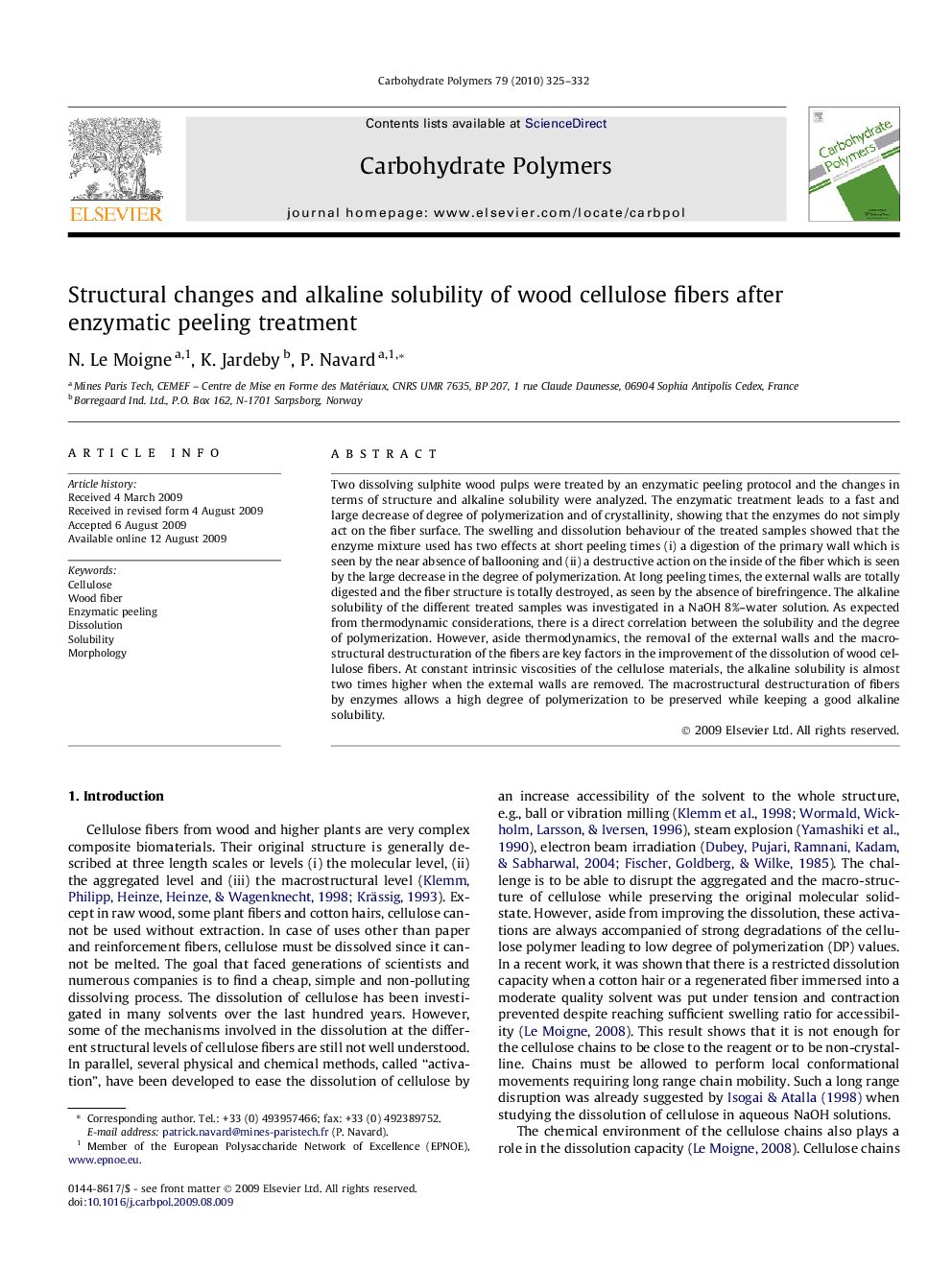| Article ID | Journal | Published Year | Pages | File Type |
|---|---|---|---|---|
| 1378159 | Carbohydrate Polymers | 2010 | 8 Pages |
Two dissolving sulphite wood pulps were treated by an enzymatic peeling protocol and the changes in terms of structure and alkaline solubility were analyzed. The enzymatic treatment leads to a fast and large decrease of degree of polymerization and of crystallinity, showing that the enzymes do not simply act on the fiber surface. The swelling and dissolution behaviour of the treated samples showed that the enzyme mixture used has two effects at short peeling times (i) a digestion of the primary wall which is seen by the near absence of ballooning and (ii) a destructive action on the inside of the fiber which is seen by the large decrease in the degree of polymerization. At long peeling times, the external walls are totally digested and the fiber structure is totally destroyed, as seen by the absence of birefringence. The alkaline solubility of the different treated samples was investigated in a NaOH 8%–water solution. As expected from thermodynamic considerations, there is a direct correlation between the solubility and the degree of polymerization. However, aside thermodynamics, the removal of the external walls and the macrostructural destructuration of the fibers are key factors in the improvement of the dissolution of wood cellulose fibers. At constant intrinsic viscosities of the cellulose materials, the alkaline solubility is almost two times higher when the external walls are removed. The macrostructural destructuration of fibers by enzymes allows a high degree of polymerization to be preserved while keeping a good alkaline solubility.
